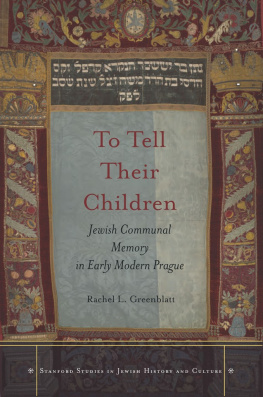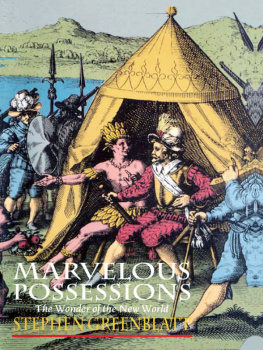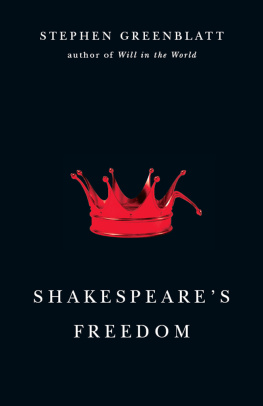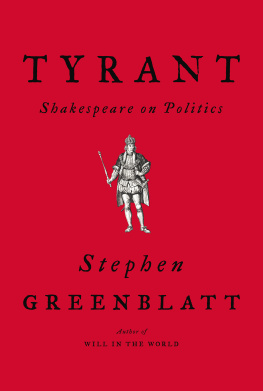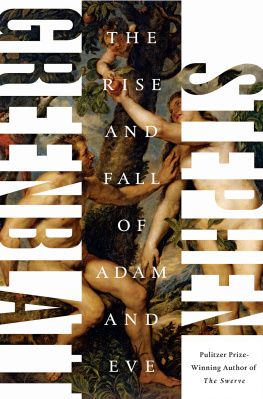Stanford University Press
Stanford, California
2014 by the Board of Trustees of the Leland Stanford Junior
University. All rights reserved.
No part of this book may be reproduced or transmitted in any form or by any means, electronic or mechanical, including photocopying and recording, or in any information storage or retrieval system without the prior written permission of Stanford University Press.
Printed in the United States of America on acid-free, archival-quality paper
Library of Congress Cataloging-in-Publication Data
Greenblatt, Rachel L., 1968 author.
To tell their children : Jewish communal memory in early modern Prague / Rachel L. Greenblatt.
pages cm(Stanford Studies in Jewish History and Culture)
Includes bibliographical references and index.
ISBN 978-0-8047-8602-7 (cloth : alk. paper)
1. JewsCzech RepublicPragueHistoriography. 2. Collective memoryCzech RepublicPrague. 3. Prague (Czech Republic)Historiography. I. Title. II. Series: Stanford studies in Jewish history and culture.
DS135.C96P65 2013
943.71'2004924dc23
2013021462
Typeset by Newgen in 10.5/14 Galliard
ISBN 978-0-8047-8881-6 (e-book)
Note on Transliterations and Names
In translating Hebrew and Yiddish words into Latin characters, I have sought, for the most part, to follow the guidelines outlined in the Encyclopaedia Judaica. Hebrew words are transliterated according to contemporary Israeli Hebrew pronunciation, surely not that used by Jewish residents of early modern Prague, but most familiar to contemporary readers. In other contexts, I have sought to reproduce Yiddish pronunciations. For that reason, a single word, such as the plural or construct form of megillah might be transliterated in different ways depending on the language of the text from which it is taken, for example, Megillat eivah for a Hebrew text and Megillas eivah for a Yiddish version of the same basic text.
Places and families in Prague often had different names in Hebrew, Yiddish, Czech, and German, and orthography was not consistent even within a single language. I have tried to use the most familiar forms of names where possible.
Jews in early modern Prague were often known by multiple variations of their names, in Hebrew, Yiddish, and/or German, Czech, Latin versions. All had a patronymic: men known as son of, rendered here as the Hebrew ben, as in Solomon ben David, and women as daughter of, bat, as Dinah bat Jacob. This Hebrew version of the name has generally been preferred throughout the book, although various sources also use less formal Yiddish variants, or European versions.
Acknowledgments
If it takes a village to raise a child, this book has required its own virtual bustling town, a far-flung network of friends and colleagues near and far. It started, in a sense, on the unimpressive banks of the Grasse River in Massena, New York, where my immediate paternal ancestors are interred in a small Jewish cemetery, fenced in at the back of a slightly larger Catholic burial ground, trees blocking the river just ahead. Here, on the outskirts of a village where some twenty or so immigrant Jewish families once lived differently indeed from the Jews of early modern Prague, my father, grandfather, and great-uncle took me from grave to grave, explaining who was who and telling their stories, planting in me the notion that a cemetery is a site of memory, long before I had any concrete notion that such a thing as a site of memory existed in any scholarly sense.
My debts to Richard I. Cohen cannot be adequately put in words; I can, I think, aspire only to provide students, colleagues, and friends even a small portion of what he has shared with me. Israel J. Yuval read closely and asked important questions. Hillel J. Kieval and Chava Turniansky likewise contributed immeasurable time and expertise. Michael Heyd helped frame key issues early on. A deep, genuine, warm commitment to undergraduate teaching among the members of the History Department at Cornell University in the late 1980s, and particularly the support and encouragement of Walter LaFeber, paved my way in innumerable and fundamental ways, as did teachers and friends at the Pardes Institute, and Matanthe Sadie Rennert Womens Institute for Torah Study, both in Jerusalem. This book has profited greatly from conversations and exchanges, references, and corrections received from additional teachers, formal and informal, colleagues, and friends, including (but not, by any means, limited to) Elisheva Baumgarten, Ann Blair, Robert Bonfil, Chava Buchwalter, Elisheva Carlebach, Joseph M. Davis, Yaacov Deutsch, Maria Diemling, Yacov Guggenheim, Louise Hecht, Elliott Horowitz, Yosef Kaplan, Otto Dov Kulka, Robert Liberles of blessed memory, Howard Louthan, Pawel Maciejko, Vivian B. Mann, Michael Miller, Gabriel Motzkin, Lucia Raspe, Elchanan Reiner, Moshe Rosman, Jiina edinov, Bernard Septimus, Ruth Simpson, Pavel Sldek, Moshe Sluhovsky, Joshua Teplitsky, Magda Teter, Vladimir Urbnek, Scott Ury, Rebekka Vo, and Ruth Wisse. I am grateful to reading groups that pushed me at key moments: to Menahem Ben-Sasson, Israel Bartal, and to members of forums at the Hebrew University in Jerusalem that each led for several years; to Gregg Gardner, Jane Kanarek, Yehuda Kurzer, and Claire Sufrin; and to students in Harvard seminars who read chapters of this book in manuscript.
Alexandr Putk and Olga Sixtov of the Jewish Museum in Prague provided assistance essential to my research. My deepest gratitude to them as to their colleagues Vlastimila Hamakov, Daniel Polakovi, Arno Paik, and others, who gave unstintingly of their time and expertise, providing materials, references, and explanations.
I owe a special debt of gratitude to the librarians of the Judaica Reading Room of what was, at the time, the Jewish National and University Library, now the National Library of Israel, at Givat Ram, JerusalemElona Avinezer, Alisa Allon, Zipora Ben Abou, and Ruth Flintwho, alongside their consistently kind, cheerful, and wise assistants, adjusted their own work space and habits to accommodate this working, nursing mother. Nehama Zeev, Margalit Zarum, and Shoshana Fital made it possible for me to be in the reading room day in and day out, confident my childrens lives were enriched in my absence. I thank the many colleagues with whom I shared ideas, work hours, and coffee breaks and am especially grateful to Dena Ordan, instrumental in fostering a cooperative environment in the reading room through innumerable acts of thoughtful kindness. Thanks as well to all the staff in the library, to Abraham David and Yael Okun of the Institute for Microfilmed Manuscripts, Hadassah Assouline at the Central Archives for the History of the Jewish People, and, at Harvard University, Charles Berlin and staff of the Judaica Division, Houghton Library curators including Caroline Duroselle-Melish, and research librarians.
 and Naava Applebaum
and Naava Applebaum 

